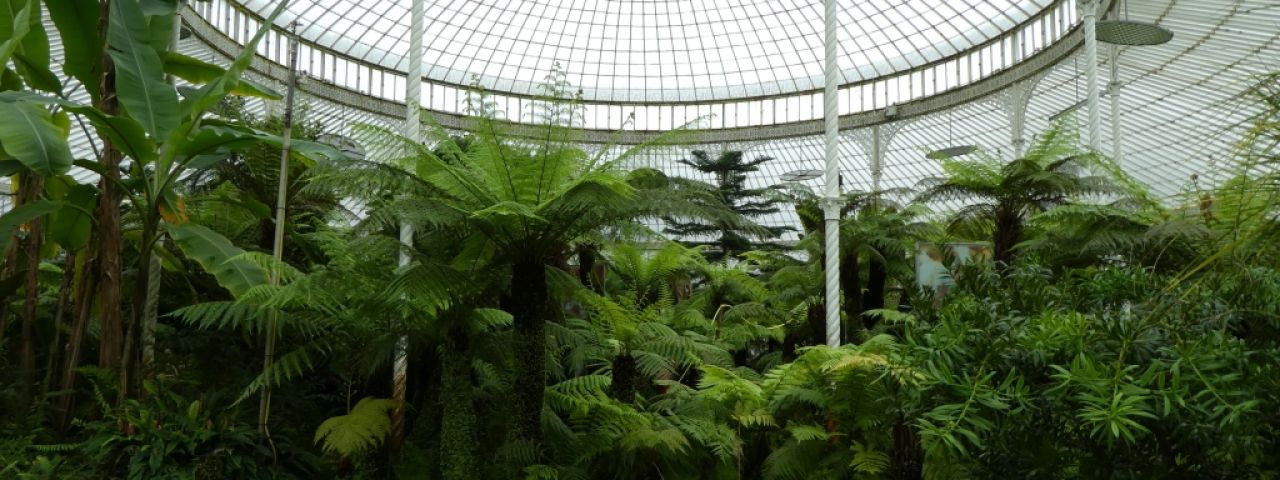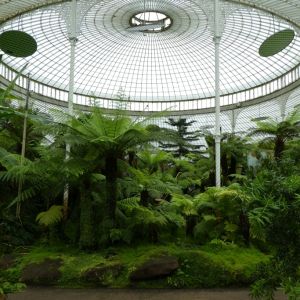Kibble Palace
Sightseeing attraction | Glasgow | Scotland | United Kingdom
Victorian glasshouse in Glasgow
The Kibble Palace is an impressive Victorian glasshouse in the West End of Glasgow, Scotland, and a standout example of 19th-century architecture. Originally designed in the 1860s by John Kibble, an eccentric engineer and art patron, as a private conservatory at his residence on Loch Long, it was later relocated to the Glasgow Botanic Gardens.
Kibble Palace Botanic Gardens
The glasshouse was rebuilt in the Botanic Gardens in 1873 and significantly expanded, with a large circular dome measuring 150 feet in diameter and extended transepts added, forming an impressive front facade. The structure is made of curved wrought iron and glass, supported by cast iron beams on ornate columns resting on massive foundations.
Historical attractions in Glasgow
Originally serving as an exhibition and concert hall, the Kibble Palace hosted prominent figures such as North American evangelists Moody and Sankey in May 1874. It is estimated that around 6,000 people gathered inside the palace at that time, while a huge crowd of 15,000 to 30,000 people waited outside.
Art and architecture in Kibble Palace
Today, the interior of the Kibble Palace houses an impressive collection of plants, including the national collection of tree ferns, planted in the 1880s. This fern collection is of national significance and creates a dense, lush forest inside the glasshouse.
Plant collection in Kibble Palace
In addition to the botanical collection, the Kibble Palace also houses a number of marble sculptures, including works such as "Eve" and "King Robert of Sicily". These artworks complement the natural beauty of the plants and create a unique atmosphere.
Between 2003 and 2006, the Kibble Palace underwent a comprehensive restoration, during which it was fully dismantled, restored off-site, and then rebuilt. This careful restoration ensured that the glasshouse is preserved for future generations and continues to be considered one of Glasgow's architectural gems.


















































































































































